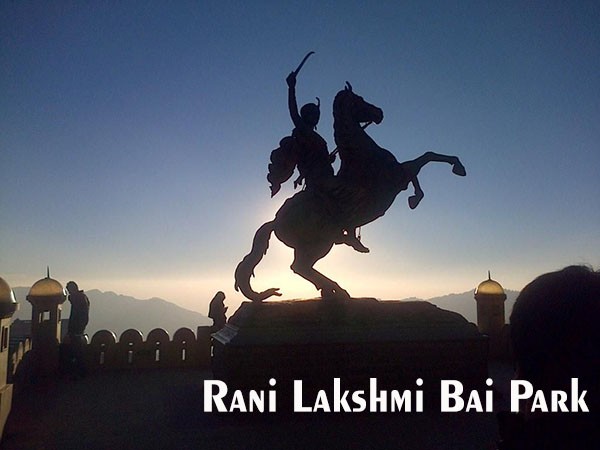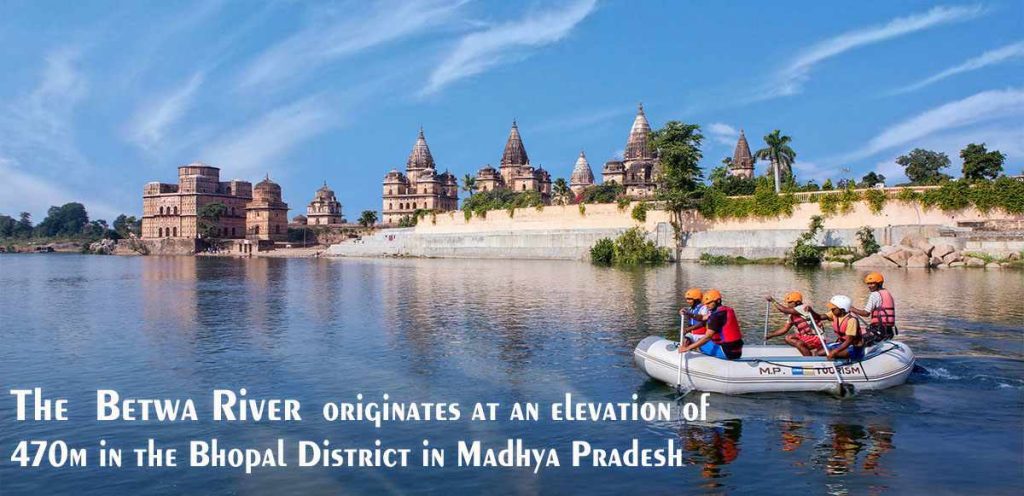Namaskar ! We are at 19 November 1828 with an Indian queen of the Maratha princely state of Jhansi. The Home of Jhansi Ki Rani in North India currently present in Jhansi district in Uttar Pradesh.
JHANSI KI RANI (MANIKARNIKA)
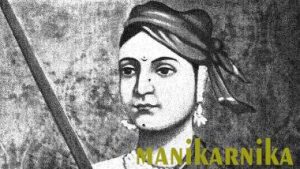 She was one of the leading figures of the Indian rebellion of 1857. Manikarnika was married to the Maharaja of Jhansi Gangadhar Rao Newalkar and then afterwards called Lakshmibai in honour of the Hindu goddess Laxmi and according to the Maharashtrian tradition of women being given a new name after marriage called Rani Lakshmibai.
She was one of the leading figures of the Indian rebellion of 1857. Manikarnika was married to the Maharaja of Jhansi Gangadhar Rao Newalkar and then afterwards called Lakshmibai in honour of the Hindu goddess Laxmi and according to the Maharashtrian tradition of women being given a new name after marriage called Rani Lakshmibai.
JHANSI INTRODUCTION
In 1861 the British Government gave the Jhansi fort and Jhansi city to JiyajiRao Scandia. Jhansi was then became a part of Gwalior state. In 1886 Britishers took back Jhansi from Gwalior state. In independent India Jhansi was included in Uttar Pradesh which is knowns as Jhansi The Home of Jhansi Ki Rani.
Jhansi city, situated between the rivers Pahunj and Betwa is a symbol of bravery, courage and self-respect. It is said that in ancient times Jhansi was a part of the regions Chedi Rashtra, Jejak Bhukit, Jajhoti and Bundelkhand.
Soo, let’s visit a Jhansi of such a brave queen.
How to reach at JHANSI from the pages of Jhansi The Home of Jhansi ki Rani
By Road from the pages of Jhansi The Home of Jhansi Ki Rani
Jhansi is well connected by road to many major cities in the country. Cities like Agra, Khajurao, Delhi, Kanpur, Lucknow, etc. are easily accessible from Jhansi by road. Public and private buses connect Jhansi to major neighbouring cities. Buses ply daily from Gwalior and Khajurao to Jhansi. Buses also connect Delhi to Jhansi.
- Learn More about the History of East Indian states and east India.
- TRUE HOSTORY OF INDIAN INDEPENDENCE DAY
Celebration of Festival in Jhansi from the pages of Jhansi The Home of Jhansi Ki Rani
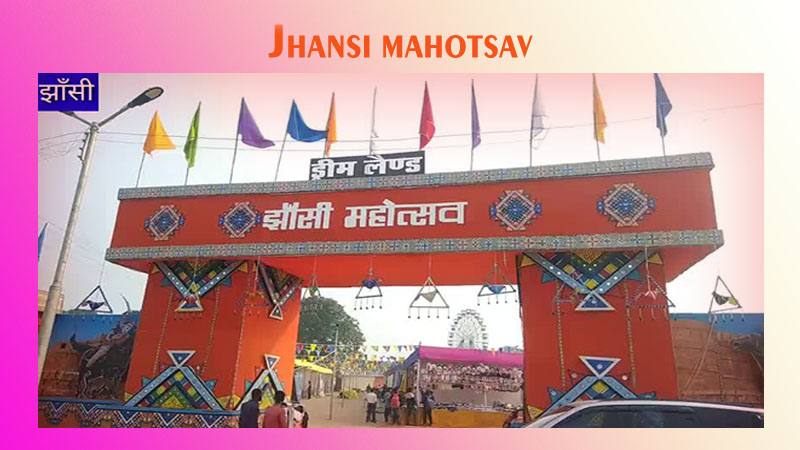 Jhansi Mahotsav takes place in the February-March and lasts for about one week. The main aim behind this festival is to showcase the arts and culture of the town. The perfect place for poetry lovers, it commemorates the memories of the legends who had excelled in the field of Poetry. A number of cultural programs are organized at the festival that includes folk songs, dances, mushairas, ghazals, alha songs, suata and rai dance along with different competitions, a food festival, a handicraft fair, etc.
Jhansi Mahotsav takes place in the February-March and lasts for about one week. The main aim behind this festival is to showcase the arts and culture of the town. The perfect place for poetry lovers, it commemorates the memories of the legends who had excelled in the field of Poetry. A number of cultural programs are organized at the festival that includes folk songs, dances, mushairas, ghazals, alha songs, suata and rai dance along with different competitions, a food festival, a handicraft fair, etc.
The state government of Jhansi’s tourism department organizes the Jhansi Mahotsav. This festival is a weeklong event. You get to see dance and music performances during the festival that highlight the culture of Bundelkhand.
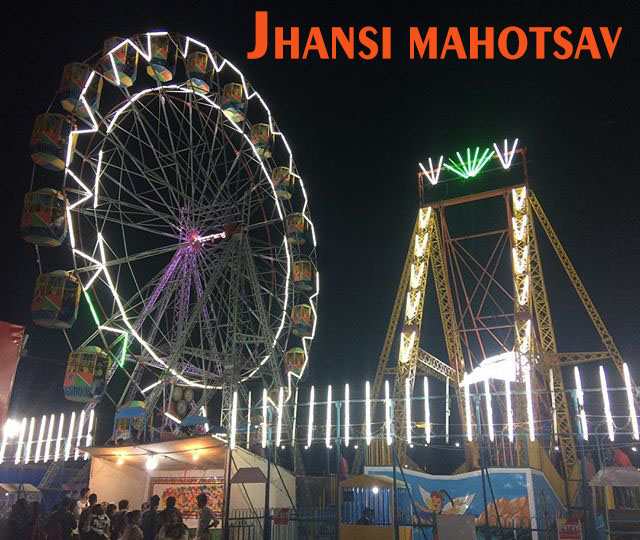
Ayurveda Jhansi Mahotsav
Ayurveda Jhansi Mahotsav also serves as a promoter of the Ayurvedic system of healing and the use of Ayurveda for general well-being. Hence the festival is also known as “Ayurveda Jhansi Mahotsav”. Other attractions of the festival include handicraft fair and traditional folk performances by local artists. Last but not the least, the festival is intended to advertise the state of Uttar Pradesh as one of the most accessible destinations for health tourism.
There is the state vegetables and flowers exhibition that are worth visiting while in Jhansi. This is basically an exhibition that lasts three days and is organized by the state government. The exhibition is held in the state gardens of Narayan Bagh during the month of February. On visiting the exhibition, you find different types of vegetables, fruits and flowers found in and around Jhansi.
Learn More about the History of Western India. Know more about the History of Northern India .
Learn More about the History of South India.
Top places to visit in Jhansi
Jhansi is a historic city in the Indian state of Uttar Pradesh. It lies in the region of Bundelkhand on the banks of Uttar Pradesh. Jhansi is the administrative headquters of Jhansi district and Jhansi division. Called the gateway of Bundelkhand.
Jhansi Fort from the pages of Jhansi The Home of Jhansi ki Rani
As stated earlier, the structure of the Jhansi Fort is a mixture of elements taken from both Maratha and Bundela styles. This is because the fort was initially constructed by Bundela Rajput Chief in 1613. After that, the Mughal Army attacked Jhansi in 1728. The then ruler of Jhansi, Maharaja Chhatrasal got help from Peshwa Bajirao to defeat the Mughal Army. To show his gratitude towards the Peshwa, Maharaja Chhatrasal gave a part of Jhansi to him. Peshwa Bajirao constructed the rest of Jhansi and even extended the complexes. That is how the fortress came to be built with both styles.
 The fort of Maharani Jhansi has strategic importance since the earliest of times. It was built by Raja Bir Singh Ju Deo (1606-27) of Orchha on a rocky hill Bangra in the town of Balwant agar. The fort has ten gates (Darwaja). Some of these are Khandero Gate, Datia Darwaza, Unnao gate, Jharna Gate, Laxmi Gate, Sagar Gate, Orchha Gate, Sainyar Gate, Chand Gate.
The fort of Maharani Jhansi has strategic importance since the earliest of times. It was built by Raja Bir Singh Ju Deo (1606-27) of Orchha on a rocky hill Bangra in the town of Balwant agar. The fort has ten gates (Darwaja). Some of these are Khandero Gate, Datia Darwaza, Unnao gate, Jharna Gate, Laxmi Gate, Sagar Gate, Orchha Gate, Sainyar Gate, Chand Gate. Among places of interest within the main fort area are the Karak Bijli Toup (Tank), Rani Jhansi Garden, Shiv temple and a “Mazar” of Ghulam Gaus Khan, Moti Bai and Khuda Baksh. The Jhansi fort, a living testimony of ancient glamor and valour, also has a fine collection of sculptures which provide an excellent inside into the eventful history of Bundelkhand.
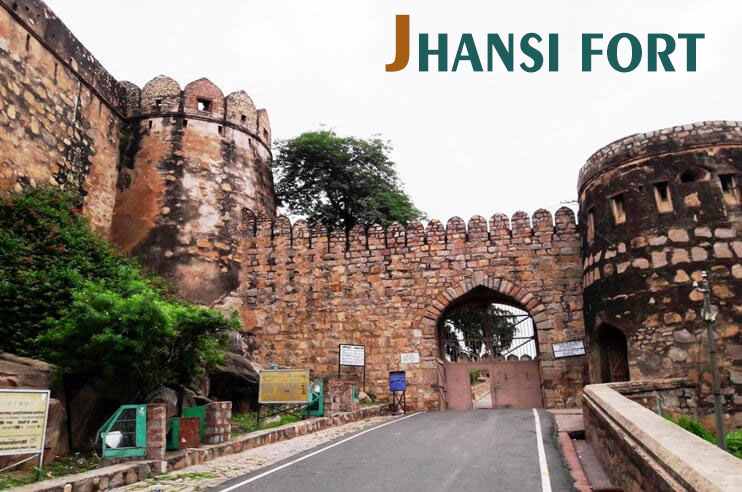
Rani Mahal from the pages of Jhansi The Home of Jhansi ki Rani
Constructed by Raghunath II Constructed by Raghunath II Newalkar in the 18th century, Rani Mahal or the Queen’s Palace was the erstwhile residence of Rani Lakshmi bai, the Rani of Jhansi. It has now been converted into a museum, which houses a vast collection of archaeological remains from the period between the 9th and 12th centuries AD.
The palace reflects a typical Bundelkhand style of architecture with its open courtyards and arched chambers. It is said that it was in this palace that Rani Lakshmi bai plotted with Tantya Tope and Nana Sahib on how to overcome the colonial rule. Legend has it that after the Rani’s defeat, the British ravaged the palace.
Rani Mahal in Jhansi, translating to the queen’s palace, is the former residence and royal palace of Rani Lakshmi Bai. Built in the 18th century, a large part of this beauty was destroyed during the Indian Rebellion. However, it was later renovated into a museum with artefacts from the 9th century and life of Rani Lakshmi bai.
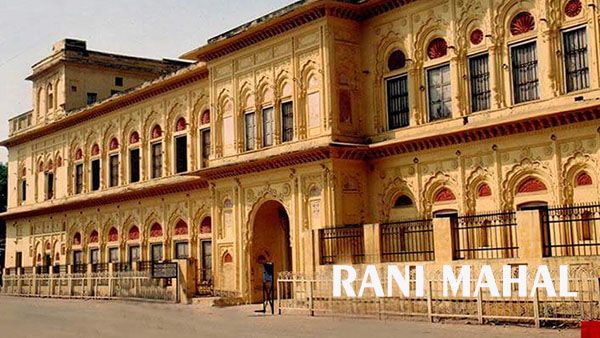
Panchatantra park from the pages of Jhansi The Home of Jhansi ki Rani
The park was developed by the Jhansi Development Authority on a vast stretch of a green patch in the middle of the city Jhansi mainly for the children with exciting Panchatantra themed animal statues.
Panchatantra Park is an animal-themed park mainly for children in Jhansi based on the ‘Panchatantra’ book by Vishnu Sharma. Apart from several animal-themed slides for the children, this park also has a jogging track for adults.
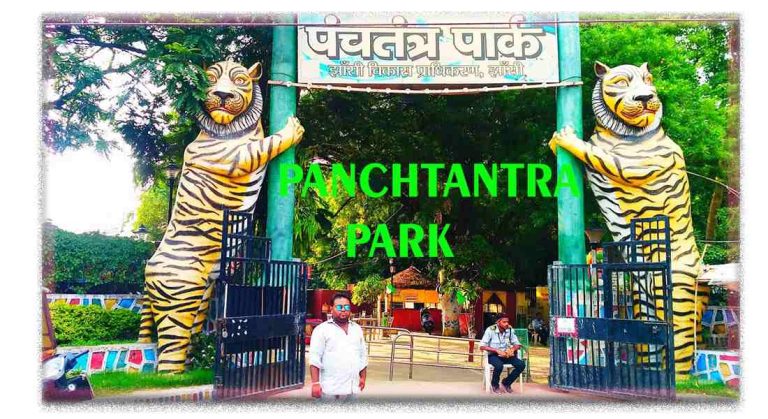
Orchha Fort Complex from the pages of Jhansi The Home of Jhansi ki Rani
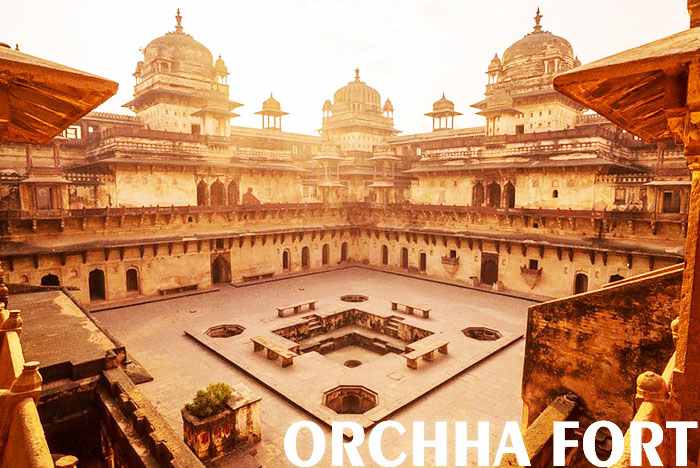 The small town of Orchha situated 16 km from Jhansi in Madhya Pradesh emanates an architecturally historicized complex called the Orchha Fort Complex.
The small town of Orchha situated 16 km from Jhansi in Madhya Pradesh emanates an architecturally historicized complex called the Orchha Fort Complex.
It was built in 1501 AD by Raja Rudra Pratap Singh of the Bundela dynasty. It is a manifestation of Rajput and Mughal architecture flamboyantly decorated with latticed windows, projected platforms and balconies and mirrors on ceilings. Built by the descendants of the Bundela Dynasty, the Orchha Fort complex houses several monuments such as the Raja Mahal, Sheesh Mahal, Rai Praveen Mahal and also gardens such as the Phoolon Bagh.
St. Jude’s Shrine from the pages of Jhansi The Home of Jhansi ki Rani
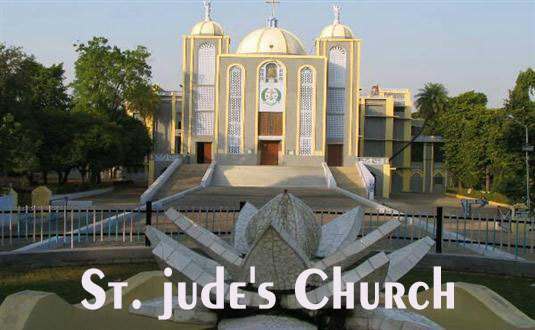 St. jude’s Church is located in the Civil Lines of Jhansi, which is a famous tourist destination for Catholic Christians. The devotion to St. Jude Thaddaeus, was practically unknown in India, and it was the late Bishop F. X. Fenech who started it in Jhansi, which was a Prefecture Apostolic in those days.
St. jude’s Church is located in the Civil Lines of Jhansi, which is a famous tourist destination for Catholic Christians. The devotion to St. Jude Thaddaeus, was practically unknown in India, and it was the late Bishop F. X. Fenech who started it in Jhansi, which was a Prefecture Apostolic in those days.
St. Jude’s Shrine, located in Jhansi, Uttar Pradesh is a Roman Catholic Latin Rite shrine and is devoted to St. Jude Thaddeus. It was built by Francis Xavier Fenech. It is in the Cantonment area of Jhansi and is one of the popular churches among the Catholic community in the state.
Rani laxmi bai park located in Jhansi
Rani Lakshmi Bai Park located in Jhansi, Uttar Pradesh is set in the foothills of Jhansi Fort and is interconnected to Maithili Sharan Gupta Park. At the center of the park there is a magnificent bronze statue of Rani Lakshmi Bai riding her horse, her sword raised and her adopted son Anand Rao, sitting behind her.
Best Place to visit near Jhansi The Home of Jhansi Ki Rani
Jahangir Mahal from the pages of Jhansi The Home of Jhansi ki Rani
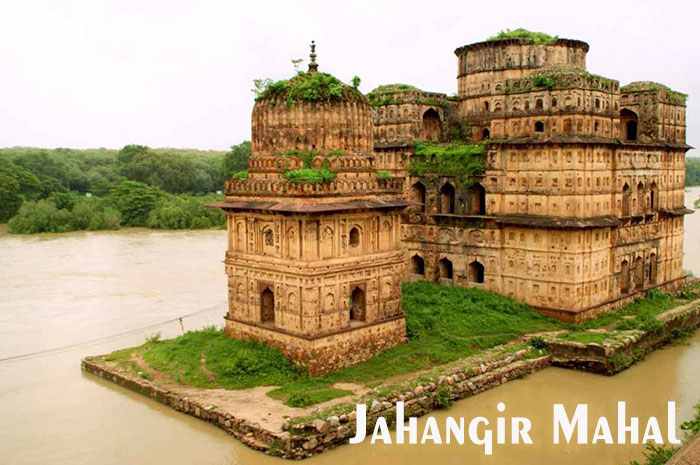 Jahangir Mahal was built in the 17th century by Raja Bir Singh Deo and was named after the Mughal Emperor Jahangir. There are several other structures around the mahal, including a fort, a palace, cenotaphs in the town, and another palace referred to as the Collector’s Office, which has been turned into a state museum. The palace is an impressive structure.
Jahangir Mahal was built in the 17th century by Raja Bir Singh Deo and was named after the Mughal Emperor Jahangir. There are several other structures around the mahal, including a fort, a palace, cenotaphs in the town, and another palace referred to as the Collector’s Office, which has been turned into a state museum. The palace is an impressive structure.
Heavy yet light, climbing three storeys high with apartments topped with domes and hanging balconies, it’s a fetching mix of Indo-Islamic architecture. Note the two elephants gracing its eastern entrance and the crouching male sculptures on the canopied kiosks gracing the roof. The last, according to some, represent images of the architects or their patron gods.
Betwa River from the pages of Jhansi The Home of Jhansi ki Rani
The Betwa River originates at an elevation of 470m in the Bhopal District in Madhya Pradesh. After traversing a distance of 590 km, the river joins the Yamuna River near Hamirpur at an elevation of 106.68 m. The total catchment area of the Betwa River is 46,580 sq. km of which 31,971 sq. In Sanskrit “Betwa” is Vetravati.
This river is mentioned in the epic Mahabharat along with the charm Avanti river tributaries of Yamuna. Vetravati was also known as Shuktimati.
The capital of Chedi Kingdom was on the banks of this river. The length of the river from its origin to its confluence with Yamuna is 590 kilometers (370 mi), out of which 232 kilometers (144 mi) lies in Madhya Pradesh and the balance of 358 kilometers (222 mi) in Uttar Pradesh. In accordance with an inter-state agreement between the states of Uttar Pradesh and Madhya Pradesh in 1973, Betwa River Board (BRB) was constituted under the Betwa River Board Act, 1976.
Raja Ram Temple from the pages of Jhansi The Home of Jhansi ki Rani
The Ram Raja Temple is a temple in Orchha, Madhya Pradesh, India. It is a sacred Hindu pilgrimage and receives devotees in large numbers regularly and is also commonly known as Orchha Temple. The annual domestic tourist number is around 650,000 and the foreign tourist number is around 25,000.
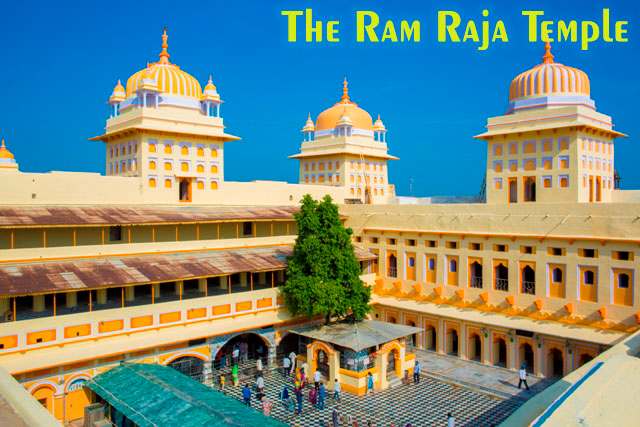 In the temple Raja Ram is accompanied by Sita (on the left), brother Lakshman (on the right), Maharaj Sugriva and Narsingh Bhagwan (on the right). Durga Maa is also present in the Darbar on the right side. Hanuman ji and Jambvan ji is praying just below Sita.
In the temple Raja Ram is accompanied by Sita (on the left), brother Lakshman (on the right), Maharaj Sugriva and Narsingh Bhagwan (on the right). Durga Maa is also present in the Darbar on the right side. Hanuman ji and Jambvan ji is praying just below Sita.
The specialty of this temple is that Lord Ram has a sword in his right hand and a shield in the other. Shri Ram is sitting in Padmasan, with the left leg crossed over the right thigh.
The Ram Raja Temple was initially the palace of the Queen Orchha. But that was until Lord Ram refused to be moved from there!
Resembling a palace, this is the only temple in India where Lord Rama is worshipped as a king.
Chaturbhuj Temple from the pages of Jhansi The Home of Jhansi ki Rani
Chaturbhuj Temple, dedicated to Vishnu, is situated at Orchha in Madhya Pradesh. The name Chaturbhuj is a combination of ‘chatur’ meaning “four” and ‘bhuj’ meaning “arms” which literally translates to “one who has four arms” and refers to Rama an Avatar of Vishnu.
 The temple has a complex multi-storied structural view which is a blend of temple, fort and palace architectural features. The temple was originally built to deify an image of Rama, as the chief deity, which was installed in the Rama Raja Temple inside the Orchha Fort complex. At present an image of Radha Krishna is worshiped in the temple. The temple is noted for having one of the tallest viman among Hindu Temple standing at 344 feet.
The temple has a complex multi-storied structural view which is a blend of temple, fort and palace architectural features. The temple was originally built to deify an image of Rama, as the chief deity, which was installed in the Rama Raja Temple inside the Orchha Fort complex. At present an image of Radha Krishna is worshiped in the temple. The temple is noted for having one of the tallest viman among Hindu Temple standing at 344 feet.
According to a local legend, the temple was built after the queen had a “dream visitation” by Lord Rama directing her to build a temple for Him; while Madhukar Shah was a devotee of Krishna, his wife’s dedication was to Rama.
Following the approval to build the Chaturbhuja Temple, the queen went to Ayodhya to obtain an image of Lord Rama that was to be enshrined in her new temple. When she came back from Ayodhya with the image of Rama, initially she kept the idol in her palace, called Rani Mahal, as the Chaturbhuj Temple was still under construction. She was, however, unaware of an injunction that the image to be deified in a temple could not be kept in a palace.
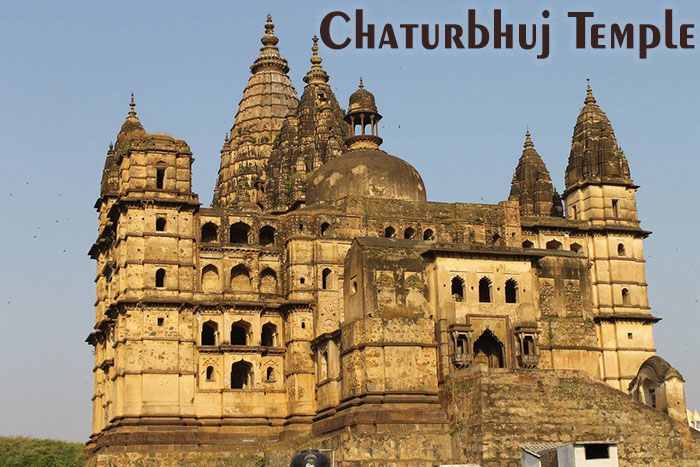
Songs and poems from the pages of Jhansi The Home of Jhansi ki Rani
Lakshmi Bai is the Hindi poem Jhansi ki Rani written by Subhadra Kumari Chauhan. An emotionally charged description of the life of Rani Lakshmi bai, it is often taught in schools in India. A popular stanza from it reads:
बुंदेले हरबोलों के मुँह हमने सुनी कहानी थी, खूब लड़ी मर्दानी वह तो झाँसी वाली रानी थी।।
Translation: “From the bards of Bundela we have heard this story / She fought valiantly like a man; she was the queen of Jhansi.”
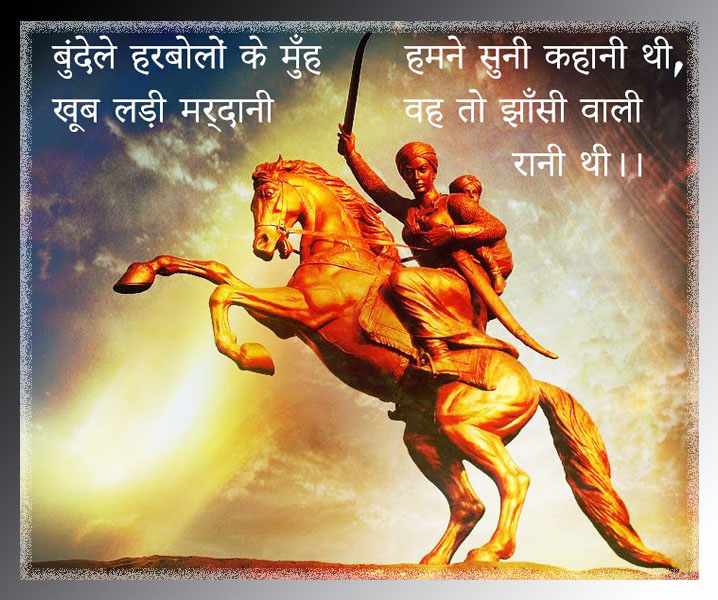
For Marathi people there is an equally well-known ballad about the brave queen penned at the spot near Gwalior where she died in battle, by B. R. Tambe, who was a poet laureate of Maharashtra and of her clan. A couple of stanzas run like this:
रे हिंदबांधवा, थांब या स्थळीं अश्रु दोन ढाळीं /
ती पराक्रमाची ज्योत मावळे इथे झाशिवाली / … / घोड्यावर खंद्या स्वार, हातात नंगि तर्वार / खणखणा करित ती वार / गोर्यांची कोंडी फोडित पाडित वीर इथे आली /
मर्दानी झाशीवाली!
Jhansi has its own division of the Indian north central railways. It is well connected by train services to all parts of the country.
Learn more about India’s Independence and relevant inspiring facts.
The Notion of the British Indian Governance reveal that they never wanted to Free India.
To know more.
- Britain’s India policy
- Letter of churchill to prime minister
- How Britain stole $45 trillion from India
- Jinnah to Stafford Cripps
- Opposition to the partition of India
Nothing can be more precious than your Freedom your belief of being Independent. A citizen of an Independent Country. Hence no crime can be more heinous which liberates the inhabitants of the land, which inherits discrimination in the natives. Stop them, irrespective of what they are and be united forever. Celebrate the 76th Independence day of India on 15th August, 2022.
Have a Pleasant time. Take a very good care of yourself, Always try to take deep breath, and water in sips, Enjoy. Every Moment. It is precious than anything of this materialistic world.
Thanks to Read me.
 Namaste, we sanguinely remain yours.
Namaste, we sanguinely remain yours.
Kumar Apneet & Team members.

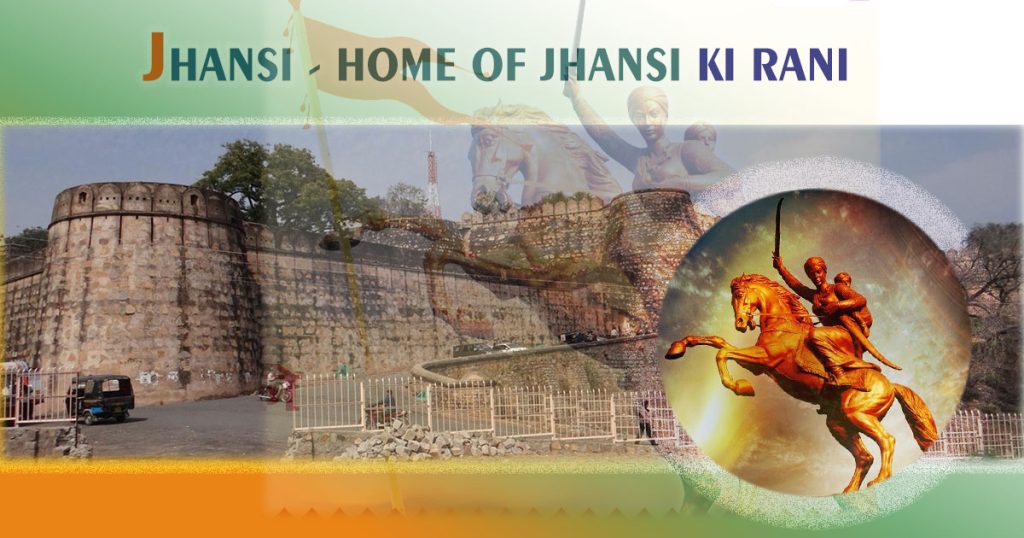
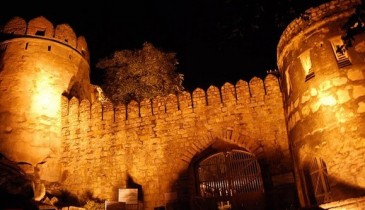 The fort of Maharani Jhansi has strategic importance since the earliest of times. It was built by Raja Bir Singh Ju Deo (1606-27) of Orchha on a rocky hill Bangra in the town of Balwant agar. The fort has ten gates (Darwaja). Some of these are Khandero Gate, Datia Darwaza, Unnao gate, Jharna Gate, Laxmi Gate, Sagar Gate, Orchha Gate, Sainyar Gate, Chand Gate.
The fort of Maharani Jhansi has strategic importance since the earliest of times. It was built by Raja Bir Singh Ju Deo (1606-27) of Orchha on a rocky hill Bangra in the town of Balwant agar. The fort has ten gates (Darwaja). Some of these are Khandero Gate, Datia Darwaza, Unnao gate, Jharna Gate, Laxmi Gate, Sagar Gate, Orchha Gate, Sainyar Gate, Chand Gate. 